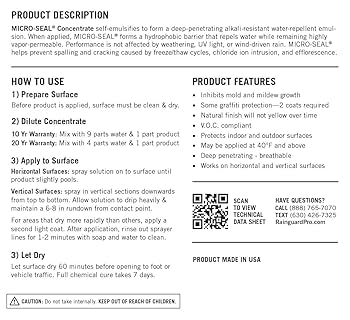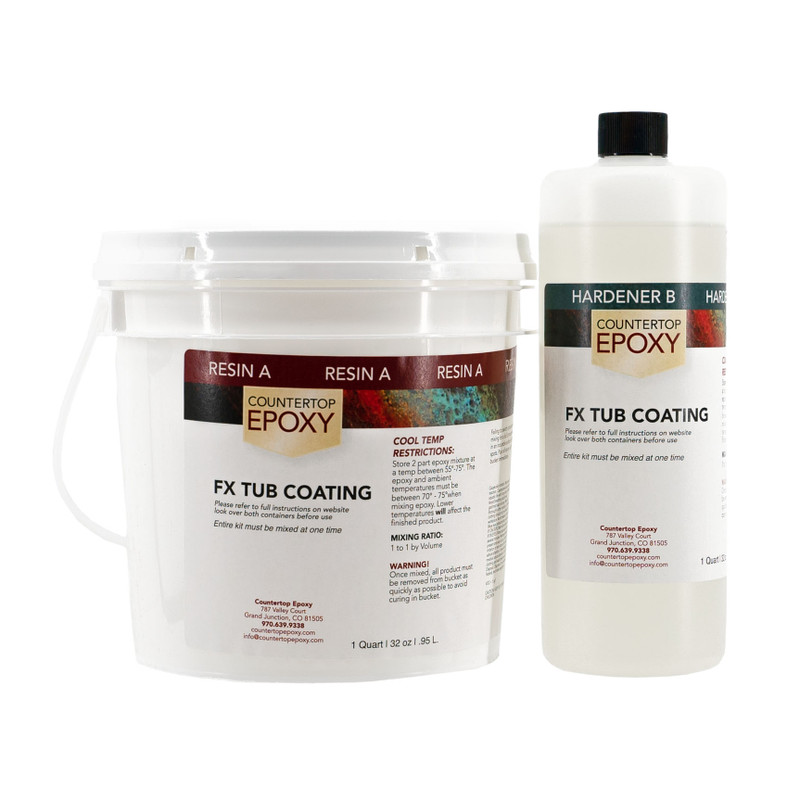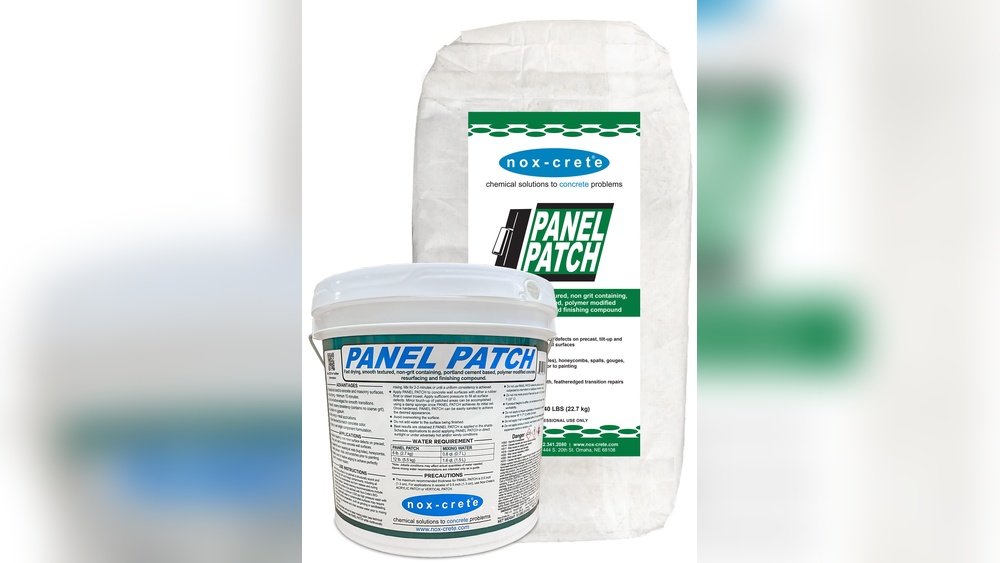Have you ever wondered what really happens when you mix two products together? Whether you’re blending paints, cosmetics, or cleaning supplies, the way these products combine can completely change the final look and feel—the finish—of what you’re working on.
Sometimes, the result is smooth and flawless. Other times, it’s uneven, patchy, or just not what you expected. Understanding how mixing two products affects the finish is key to getting the perfect outcome every time. You’ll discover the surprising science behind mixing, how different ingredients interact, and simple tips to control the finish you want.
Keep reading to unlock the secrets that will help you master your next project with confidence.

Credit: www.amazon.com
Effects Of Mixing On Surface Finish
Mixing two products can change the surface finish in many ways. The final look depends on how the substances interact. Some mixtures create smooth finishes, while others cause rough or uneven textures. Understanding these effects helps achieve the desired finish for your project.
Changes In Texture
Mixing different products often alters the texture of the surface. Some combinations make the finish smoother by filling in tiny gaps. Others may create a grainy or bumpy feel due to uneven mixing. The texture depends on the particle size and consistency of each product.
Color And Gloss Variation
The surface color can shift after mixing two products. Sometimes the colors blend well, resulting in a uniform look. Other times, the colors separate or become dull. Gloss levels may also change, causing the finish to appear shiny or matte depending on the mix.
Durability And Wear
Mixing products affects how the finish holds up over time. A well-blended mix can improve strength and resistance to scratches. Poorly combined products might peel or wear away faster. The chemical compatibility of the products plays a key role in durability.
Drying And Curing Times
The drying speed often changes when two products are mixed. Some mixtures dry faster, while others take longer. This affects how soon you can use or handle the finished surface. The drying time depends on the chemical reactions between the mixed materials.
Chemical Compatibility And Reactions
Mixing two products can change the finish by causing chemical reactions or blending effects. Some mixtures create smooth, even coatings, while others may separate or react, altering texture and color. Understanding product compatibility helps prevent unwanted changes in the final look.
Chemical compatibility plays a key role in how two products combine. Mixing products that are chemically compatible usually results in a smooth, even finish. Incompatible products can cause reactions that spoil the finish or weaken the surface.
Reactions between chemicals can create new substances or cause separation. This affects texture, color, and durability of the finish. Understanding these reactions helps avoid damage and achieve the desired look.
How Chemical Properties Influence Mixing
Chemicals with similar properties mix well. For example, polar liquids blend smoothly with other polar liquids. Nonpolar liquids behave the same with other nonpolar liquids. Mixing polar with nonpolar often causes separation.
This separation can create layers or uneven finishes. The less dense liquid usually floats on top. This happens because the molecules do not bond well.
Types Of Chemical Reactions In Mixing
Physical mixing forms a uniform blend without new substances. The two products keep their original properties. Chemical reactions create new compounds, changing the finish completely.
Some reactions cause bubbling, color changes, or thickening. These changes can ruin the finish or make it uneven. Knowing which products react helps prevent such issues.
Effects On Finish Quality
Chemical reactions can cause finishes to crack, peel, or discolor. Incompatible mixes may dry too fast or stay sticky. Proper compatibility ensures a smooth, durable finish that lasts.
Testing small amounts before full application helps catch problems early. This step saves time and materials by avoiding poor results.
Physical Properties Influencing Finish
Physical properties play a key role in how two products mix and affect the final finish. These properties determine if the products blend smoothly or stay separate. Understanding them helps predict the texture, look, and durability of the finish.
Two important physical properties are polarity and solubility, and density and layering. These influence how well products combine and how the finish appears after application.
Polarity And Solubility
Polarity describes how molecules attract or repel each other. Polar substances mix well with other polar substances. Nonpolar substances mix well with other nonpolar ones.
If you mix a polar product with a nonpolar one, they do not dissolve in each other. This causes separation in the finish. For example, water (polar) and oil (nonpolar) do not mix well, resulting in layers rather than a smooth finish.
Solubility depends on polarity. Products that dissolve into each other create a uniform finish. When solubility is low, the finish may look uneven or patchy.
Density And Layering
Density measures how heavy a product is for its size. When two products have different densities, they tend to form layers.
The less dense product floats on top of the denser one. This layering can affect the smoothness and consistency of the finish. For instance, oil floating over water creates a visible separation.
Layering may cause uneven drying or patchy areas in the finish. Proper mixing techniques or additives can sometimes reduce layering and improve finish quality.

Credit: www.countertopepoxy.com
Common Problems When Combining Products
Mixing two products can change the final finish in unexpected ways. Some combinations cause issues that affect look and feel. Understanding common problems helps avoid poor results. Two main issues stand out when combining products: separation and layering, and uneven textures caused by emulsions. Both impact the finish quality and durability.
Separation And Layering
Separation happens when mixed products do not blend fully. Instead, they form layers due to different densities or chemical properties. For example, oil and water separate because one is polar and the other is nonpolar. This creates uneven surfaces and weak adhesion in the finish.
Layering can make the finish look blotchy or patchy. It also reduces durability as layers peel or flake easily. Products with incompatible ingredients often cause separation. Checking product compatibility before mixing prevents this problem.
Uneven Texture And Emulsions
Uneven texture occurs when two products partially mix but do not form a stable blend. This creates an emulsion, where tiny droplets of one product disperse in the other. Over time, these droplets join together and separate again, causing a rough or bumpy finish.
Emulsions may look smooth at first but break down with time. This leads to inconsistent texture and weakened finish strength. Using products designed to emulsify properly avoids this issue. Always follow product instructions for best results.
Expert Tips For Successful Mixing
Mixing two products can change the finish in many ways. Getting the right result needs skill and care. Expert tips help avoid common mistakes. These tips ensure the mixture works well and the finish looks great.
Follow clear steps to mix products safely and effectively. This keeps the finish smooth and long-lasting. Understanding product compatibility and mixing methods is key to success.
Choosing Compatible Products
Pick products that work well together. Check labels for chemical properties and ingredients. Mixing polar with polar products usually blends smoothly. Avoid mixing polar and nonpolar products as they separate.
Test a small amount before full mixing. This shows if the products create a uniform finish. Use products from the same brand or line when possible. They are designed to mix without issues.
Proper Mixing Techniques
Mix products slowly and steadily to avoid bubbles. Use clean tools to prevent contamination. Stir gently but thoroughly to combine all parts evenly. Avoid shaking as it can cause air pockets in the finish.
Follow manufacturer instructions on ratios and mixing times. Measure accurately to keep the right balance. Let the mixture rest if needed before applying. This helps ingredients settle and blend fully.

Credit: www.amazon.com
Frequently Asked Questions
What Happens When You Mix Two Things?
Mixing two things creates either a mixture or a chemical reaction. Mixtures combine physically; reactions form new substances. Liquids may blend uniformly or separate by density and polarity. Mixing outcomes depend on chemical properties like polarity, density, and energy applied to overcome molecular forces.
What Happens When Two Liquid Materials Are Mixed?
Mixing two liquids forms either a uniform solution if they are chemically similar or separates into layers if they differ. Density and polarity determine if liquids mix, separate, or form emulsions. Polar liquids mix with polar, nonpolar with nonpolar, while polar and nonpolar liquids usually separate.
What Is The Mixing Behavior Of Liquids?
Mixing liquids creates either a uniform solution (miscible) or separate layers (immiscible). Similar polarity liquids mix well; different polarity liquids separate. Density influences layering, with lighter liquids floating above denser ones. Sometimes, partial mixing forms emulsions, which eventually separate over time.
What Is It Called When Two Liquids Mix?
When two liquids mix uniformly, it is called a miscible mixture or solution. If they separate, they form an immiscible mixture. Mixing depends on chemical properties like polarity and density.
What Happens When Two Different Products Are Mixed?
Mixing two products can create a new finish or cause separation depending on their properties.
Can Mixing Products Change The Surface Texture?
Yes, mixing can make the finish smoother, rougher, or uneven based on product compatibility.
Does Mixing Products Affect Drying Time?
Mixing often changes drying time, either speeding it up or slowing it down.
Conclusion
Mixing two products can change the finish in many ways. Sometimes, they blend smoothly into one layer. Other times, they separate and create uneven surfaces. The result depends on how the products interact chemically. Polarity and density play key roles in this process.
Knowing these basics helps you choose the right products to mix. Careful mixing can improve or spoil the final look. Always test small amounts before applying widely. This approach saves time and ensures better results. Mixing wisely leads to finishes that look just right.
 Skip to content
Skip to content 